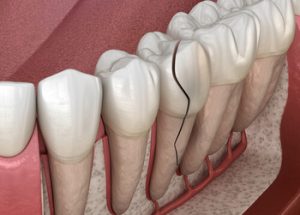When it comes to saving an infected or compromised tooth, few dental procedures are as effective and commonly used as root canal therapy. Although it has a daunting reputation, root canal treatment is actually a precise and often pain-relieving procedure that helps save your natural tooth. In this guide, we’ll explore the different types of root canals, how they work, and what to expect so you feel informed and confident about your oral health choices.
What Exactly Is a Root Canal?
Before diving into the types of root canals, let’s start with what the procedure actually involves. A root canal is a dental procedure designed to treat infected or inflamed pulp found in the tooth’s interior. This pulp contains nerves, blood vessels, and soft tissues that help nourish the tooth. When infection or inflammation occurs due to decay, trauma, or repeated dental procedures, root canal therapy becomes necessary to eliminate infection and save the natural tooth.
The treatment involves:
- Removing the infected pulp tissue
- Cleaning and shaping the root canal system
- Filling the canal with a root canal filling material, usually gutta-percha
- Sealing the tooth to prevent future infections
Why Are There Different Types of Root Canals?
Every tooth is unique in its shape, size, and internal anatomy. The root canal system can vary in complexity, particularly between anterior teeth (front teeth) and posterior teeth (back molars). Some treatments are straightforward, while others require advanced technologies and techniques to navigate complex root canal systems. Understanding the types of root canal procedures allows you and your dentist to select the most appropriate treatment for your individual needs.
1. Standard Non-Surgical Root Canal
This is the most common and straightforward form of root canal treatment. It is typically performed under local anaesthetic and involves no surgical intervention. The goal is to treat the infected pulp, clean out the root canals, and seal the tooth.
When is it used?
- Infected or inflamed pulp
- Deep tooth decay
- Dental trauma
- Typical signs include heightened sensitivity to hot or cold, swelling near the affected tooth, or ongoing discomfort and pain.
Procedure highlights:
- Local anaesthetic applied
- The pulp chamber accessed through the top of the tooth
- Infected pulp and debris removed
- Root canals are cleaned using files and sometimes sound waves (ultrasonics)
- Canals filled with gutta-percha
- Tooth sealed with a temporary or permanent filling
This type of treatment is especially common in anterior teeth with simpler root structures.
2. Pulpotomy and Pulpectomy Procedures
These procedures are commonly used in paediatric dentistry or as an emergency measure before a full root canal.
Pulpotomy
This involves the removal of the inflamed pulp from the pulp chamber only, leaving the tooth root intact. It’s often used in children as a part of preserving primary teeth or as an initial treatment for adult teeth.
Pulpectomy
Pulpectomy involves removing the entire pulp tissue from both the crown and the tooth root. It is typically the first step in full root canal therapy.
When are these used?
- As part of treating infected pulp in baby teeth
- The initial stage of treating severely infected teeth
- Emergency pain relief
These procedures aim to alleviate pain and control infection before more comprehensive root canal treatment is carried out.
3. Root Canal Retreatment
Not every root canal treatment is successful the first time. If the treated tooth becomes infected again, root canal retreatment may be necessary.

- Complicated or untreated canals
- Breaks in the filling material
- Delayed crown placement
- New decay exposing the root canal system
What happens during retreatment?
- The old filling material is removed
- The root canal is re-cleaned and reshaped
- Any infected tissue is eliminated
- A new filling is placed, and the tooth is resealed
Root canal retreatment often involves more advanced techniques, especially in teeth with complex anatomy or prior incomplete treatment.
4. Endodontic Microsurgery (Surgical Root Canal)
When a non-surgical root canal is not sufficient to eliminate infection, endodontic surgery may be required. This approach targets persistent infection in the surrounding tissues or the root tip of the tooth.
Common forms of endodontic surgery include:
- Apicoectomy – Extraction of the root tip along with the surrounding infected tissue.
- Root-end filling – Sealing the tip of the root to prevent reinfection
- Cyst removal – Treating cysts or abscesses around the tooth root
When is endodontic microsurgery recommended?
- Infection persists after initial treatment
- Root canals are blocked or too curved for standard instruments
- Fractures or complex root shapes
- Failure of previous retreatment
Modern endodontic surgery uses microscopes and micro-instruments to increase precision and improve outcomes, especially when dealing with a compromised tooth.
5. Waterlase-Assisted Root Canal Treatment
Waterlase is an advanced dental laser technology that combines water and laser energy to perform procedures with greater comfort and precision.
How it helps during root canal therapy:
- Provides better access to the complex root canal system
- Enhances cleaning of canals
- Reduces bacterial load
- Often leads to faster healing and reduced post-operative discomfort
While not a separate type of root canal, this technology is often integrated into other types of root canal procedures, particularly in complex or repeat cases.
6. Treatment for Complex Root Canal Systems
Some teeth have an unusually high number of canals or intricate shapes that make them harder to treat. These include molars with four or more canals, teeth with curved or calcified roots, or teeth that have been previously restored with crowns or bridges.
Treatment strategies for complex root canals may include:
- Cone beam CT imaging for detailed visualisation
- Use of endodontic microscopes
- Ultrasonic tools for cleaning hard-to-reach areas
- Advanced sealing techniques and root canal filling materials
What Happens After the Root Canal?
Once your root canal therapy is completed, a follow-up visit is often needed to ensure proper healing and restoration. In most cases, a crown is placed over the treated tooth to provide strength and long-term protection.
Post-treatment tips:
- Avoid chewing on the affected side until the tooth has been completely restored to prevent damage or discomfort.
- Continue good oral hygiene practices.
- Attend follow-up appointments as advised.
- Be alert for symptoms of infection, including ongoing pain or swelling in the treated area.
Is Root Canal Treatment Safe and Effective?
Absolutely. When performed by a trained dental professional, root canal procedures are safe, reliable, and have a high success rate. The goal of endodontic treatment is always to preserve your natural teeth and alleviate pain without needing extraction.
Root canal treatments allow you to maintain your original bite and avoid issues that can come with missing teeth, such as jawbone deterioration or shifting of surrounding teeth.
FAQs About Types of Root Canals
How many types of root canals are there?
There are several types, including standard non-surgical root canals, pulpotomy, pulpectomy, root canal retreatment, and endodontic microsurgery.
What is the difference between pulpotomy and pulpectomy?
A pulpotomy removes the pulp from the crown only, while a pulpectomy removes all pulp from both the crown and the root.
Is root canal retreatment common?
Yes, especially when the initial treatment fails due to complex anatomy or reinfection.
Do all teeth have the same number of root canals?
No. Anterior teeth usually have one canal, while molars may have three or more, some with complex shapes.
How do I know which type of root canal I need?
Your dentist will assess your tooth using X-rays and clinical exams. The decision is based on the location of the tooth, the severity of the infection, and whether previous treatments have been done.
Is root canal treatment painful?
Modern root canal procedures are done under local anaesthetic and are generally no more uncomfortable than getting a filling. Most patients report relief from pain once the infected tissue is removed.
Final Thoughts: Choosing the Right Type of Root Canal

By addressing infected pulp tissue early and choosing the right treatment option, you’re not only saving your natural teeth, but you’re also protecting your long-term oral health.
If you’re dealing with tooth pain or have been advised that a root canal may be necessary, it’s important to seek treatment promptly. Book an appointment with Advanced Dental Care Mosman at (02) 9969 3982 to explore the best treatment option tailored to your needs.
Note: Any surgical or invasive procedure carries risks. Before proceeding, you should seek a second opinion from an appropriately qualified health practitioner.
References
- Cleveland Clinic. (n.d.). Root canal: Procedure, what it treats & recovery. Retrieved from https://my.clevelandclinic.org/health/treatments/21759-root-canal
- Ajiboye, T. (n.d.). What is a pulpotomy? Verywell Health. Retrieved from https://www.verywellhealth.com/pulpotomy-procedure-4588447
- American Association of Endodontists. (n.d.). Endodontic retreatment explained. Retrieved from https://www.aae.org/patients/root-canal-treatment/endodontic-treatment-options/endodontic-retreatment/endodontic-retreatment-explained/






